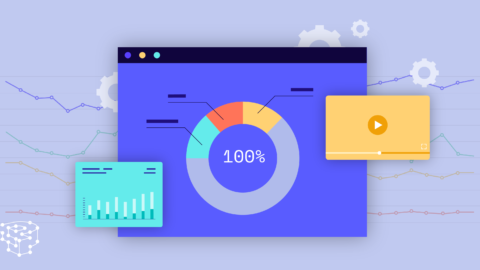Technology-Driven Growth: How to Use Digital Tools to Expand Your Business
The 21st century has been defined by the rapid and exponential growth of technology. It has revolutionized the way we live, work, and interact with one another. Technology has also created numerous opportunities for businesses to grow and expand. Today, businesses of all sizes and industries can leverage digital tools, data analytics and platforms to increase their revenue, reach new customers, and improve operational efficiency and achieve technology-driven growth.
Table of Contents
There are many ways businesses can use technology-driven growth to expand their reach and impact. Whether you’re a small business owner or an entrepreneur with a grand vision, these strategies will help you unlock the power of digital tools and take your business to new heights.
Invest in a robust online presence
In today’s digital age, having a strong online presence is critical to the success of any business. Whether you’re a brick-and-mortar store or a purely digital enterprise, your website is often the first point of contact with your customers. Therefore, investing in a well-designed, user-friendly website is crucial.
Your website should reflect your brand identity, be easy to navigate, and provide all the necessary information about your products or services. It should also be optimized for search engines, so potential customers can find you easily.
Beyond your website, you should also consider expanding your online presence through social media platforms. These channels provide an opportunity to engage with customers, build brand loyalty, and drive traffic to your website. The key is to identify which platforms your target audience uses the most and build a social media strategy that aligns with your business goals.
Outsource your IT needs
In a recent survey by Liquid Web, they found that outsourcing was one of three huge factors for those who successfully scaled their business. Outsourcing IT can provide businesses with access to specialized expertise and resources that they may not have in-house, while also allowing them to focus on their core competencies.
For example, outsourcing IT can enable businesses to implement new technologies more quickly and efficiently, as they can leverage the expertise of a third-party provider. This can include everything from cloud computing and data management to cybersecurity and software development.
Additionally, outsourcing IT can help businesses reduce costs and increase efficiency. By working with an external provider, businesses can avoid the expense of hiring and training IT staff, as well as the cost of maintaining and upgrading technology infrastructure. This can free up resources to invest in other areas of the business and help them operate more efficiently.
Leverage e-commerce platforms and similar digital tools
E-commerce platforms have transformed the retail industry by providing businesses with an alternative to traditional brick-and-mortar stores. By selling products online, businesses can reach customers around the world and operate 24/7.
Platforms such as Amazon, Etsy, and eBay have millions of active users, making them an ideal channel for businesses looking to expand their reach. However, building your own e-commerce website can also be a viable option via Technology-driven growth. With platforms like Shopify and WooCommerce, it’s easy to set up an online store, manage inventory, and process transactions.
In addition to expanding reach and increasing sales, e-commerce platforms offer a range of benefits for businesses. For example, they often provide robust analytics and reporting tools that can help businesses better understand their customers and optimize their operations. They also typically offer secure payment processing and shipping services, reducing the burden on businesses to handle these processes themselves.
Furthermore, e-commerce platforms offer a level of convenience and flexibility for both businesses and customers. Customers can browse and purchase products from anywhere in the world, at any time of day, while businesses can manage their online store from anywhere with an internet connection.
Embrace digital marketing

Digital marketing has become an essential tool for businesses looking to grow and expand. With digital marketing, businesses can target specific audiences, measure results in real-time, and adjust their strategies accordingly.
One of the most effective forms of digital marketing is search engine optimization (SEO). SEO initiatives help to optimize your website so that it can rank higher in search engine results pages (SERPs). By ranking higher, businesses can increase their visibility, drive more traffic to their website, and ultimately, increase sales.
Other forms of digital marketing include pay-per-click (PPC) advertising, social media advertising, email marketing, and content marketing. Each of these strategies has its unique advantages and can be tailored to meet the specific needs of your business. Businesses should implement an omnichannel marketing strategy by incorporating more than one of these tactics.
Automate your operations via digital tools for growth
Automation is another powerful tool for businesses looking to grow and expand. By automating routine tasks, businesses can free up time and resources, allowing them to focus on more strategic initiatives.
One area where automation can have a significant impact is customer service. By implementing chatbots, businesses can provide instant support to customers, even outside of business hours. Chatbots can handle routine inquiries, provide product recommendations, and even process transactions.
Automation can also be beneficial in supply chain management. With tools like inventory management software, businesses can streamline their inventory management processes, reduce waste, and ensure that they always have the right products on hand.
Use data analytics and digital tools to make informed decisions

Data analytics is the process of collecting, analyzing, and interpreting data to gain insights and inform decision-making. By leveraging data analytics, businesses can make informed decisions, identify opportunities for growth, and optimize their operations.
There are numerous tools and platforms available that can help businesses collect and analyze data, such as Google Analytics, Adobe Analytics, and Tableau. By tracking metrics (such as website traffic, customer behavior, and sales performance) businesses can identify areas for improvement and make data-driven decisions.
For example, businesses can use data analytics, digital tools for growth to determine which products or services are most popular among customers, which marketing channels are driving the most traffic to their website, and which operational processes are most efficient. This information can help businesses optimize their strategies and increase revenue.
Technology-driven growth presents numerous opportunities for businesses to expand their reach and impact. However, it’s important to remember that technology is not a magic solution. Businesses must still focus on providing quality products and services, building strong customer relationships, and maintaining a clear vision and strategy for growth. Technology should be used as a tool to support these goals, rather than a replacement for them.
Ultimately, the key to success is to strike a balance between Technology-driven growth and human-centric approaches to create a seamless and effective customer experience. By doing so, businesses can harness the power of technology to unlock growth opportunities and achieve long-term success.

Vice President, İntelligent Design & Consultancy Ltd
Over 12 years of global & rich experience in Portfolio & Program Delivery Management in leading & managing IT Governance, PMO, IT Portfolio/Program, IT Products, IT service delivery management, Budget Management, and more.










